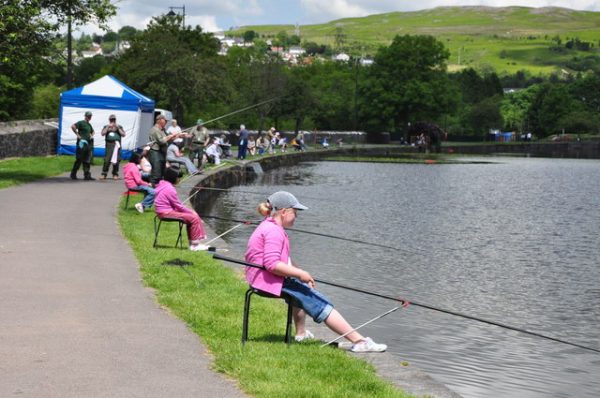The Western Front of WWI

A British trench that is manned by the 11th Cheshire Regiment and is located at Ovillers-la-Boisselle.
The Western Front
By: Briar Hopkins
“Hell is not fire; that would be the ultimate in suffering. Hell is mud.”, That’s a Quote by the Wipers Time, a Secret Newspaper published by British soldiers on the Western Front. …speaking of the Western Front, that will be our topic for this Article today. And from the quote at the beginning of the story, you’re probably running through your mind that traversing and doing anything with mud can be a hellish ordeal. Well, the Western Front of World War 1 amplified that suffering a couple times. But enough Dilly Dally. Let’s get this show on the Road!
Trench Warfare
In World War 1 a type of Warfare called Trench Warfare was employed on the Western Front of the war. Trench Warfare wasn’t a new type of warfare and had been used in the American Civil War. Trench Warfare was put to use on the Western Front in the Late Summer of 1914 after the Early Movements of the War. The early trenches of the war began simply as shallow Fox Holes until they eventually grew into mile long trenches deep enough for a man to stand up safely. The parts of a British trench included the Parapet, which protected the head and shoulders of a Soldier standing on the Fire Step. The fire step was a raised platform that soldiers stood on to be able to look over the side of the trench and to shoot at attacking enemy soldiers. And the parados is a embankment of soil and earth at the rear of a trench berm to protect soldiers from the blasts of shells and bombs exploding behind the trench. Other components of the trench were the Berm, Elbow Rest, the Front & Rear sides of the trench, and the Duck boards. During WWI a trench could be constructed in 3 standard ways, Entrenching, Sapping, or Tunneling. Entrenching was the most efficient way to construct a trench with the process just being a Soldier on the Surface digging down into the ground. Sapping was another standard way to dig a trench and involved extending a trench by digging away at the end of the trench. Only a few soldiers could work on extending the trench, however, so they weren’t exposed to enemy fire. Tunneling was the final standard way to dig a trench and was basically the equivalent of Sapping but a dirt roof was left over the trench until the trench was ready for use by soldiers. Even though Trench Warfare saw major use during World War I, after that trench warfare eventually declined out of use due to the development of combined arms tactics and armored warfare.
No Man’s Lands
No man’s land was the area of land that separated two opposing trench systems. The size of No man’s land from one opposing trench to the other ranged from a couple hundred yards to a mere 10 yards in some cases. No man’s land was often littered with shell craters, lengths of Barbed wire, improvised landmines, and the corpses of wounded and dead soldiers. It’s was suicide to get up onto no man’s land in the light of day, out in the open, with no cover what so ever including gas or physical cover. And a soldier could be killed on no man’s land in a variety of ways including sniping, machine gun fire, riflemen fire, barbed wire cuts, drowning, being blown apart by artillery/mortar fire, being wounded and left to die, being disoriented and getting lost, and a dozen more other painful ways to die. With all these ways to die taken into mind, no wonder most attempts to cross No Man’s Land were unsuccessful. To try and end this inability to successfully cross No Man’s Land a variety of different methods were tried varying from simple gas tactics that cloaked movement to the desperate use of deadly mustard gas and the Creeping Barrage Tactic. No man’s land was a true hell choked with chemical gas, soaked with blood and mud, and smothered with shell craters, barbed wire, and dead & dying soldiers.
The Christmas Truce
One the strangest and most iconic stories of World War I was the Christmas Truce of 1914. The Christmas Truce was an unofficial truce between British and German soldiers. It was Christmas Eve around 10:00 PM and the British began noticing that the Germans across the Field were singing Christmas carols. A little after noticing the singing, British Soldiers began to sing Christmas Carols back to the Germans. Eventually, soldiers from both sides cautiously emerged from their trenches and began to meet with each other in No Man’s Land. These enemies shook hands, shared kind words, and even traded tobacco, wine, and songs. Accounts of other Christmas truces along the Western Front and even the Eastern Front emerged. Diaries and Letters from different soldiers describe an impromptu soccer game, a British soldier charging Germans cigarettes for a haircut, and even men helping the enemy collect their dead. The Christmas Truce of 1914 was the last of WWI, but it lives on in the letters and diaries of soldiers who, for one night, put aside their hatred and choose peace instead.
Conclusion
Now that I have completely overloaded your brain with Information and slightly more disturbing information,-which wasn’t on purpose, just a consequence of talking about this topic-we can conclude that the Western Front of WWI was a complete hell for the soldiers fighting there. Sometimes the conditions of the fighting were literally hell, in the case of trench warfare and No Man’s land that would be true. We are humans… and with being humans comes our human nature, and our human nature is capable of many things. We are capable of emotions and actions, we are capable of death, of war, of destruction, of sorrow, of greed. But beside the sinister side of our human nature, there’s also the good and peaceful side of human nature where we are capable of hope, of magnificence, of kindness, of peace. We saw that human nature was capable of those things during the Christmas Truce. However, it’s about time I wrapped up this article. So, in case you’re interested in learning more about the western front and World War 1, here’s some helpful links. Well, I’ll see you guys in the next article, Bye!






